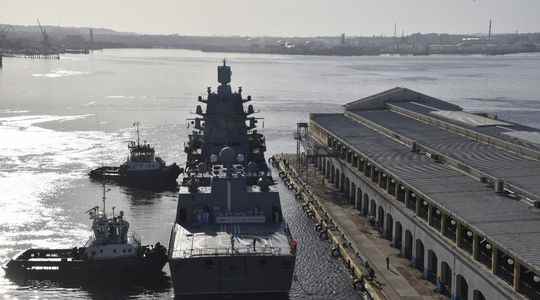These “ultramodern” weapons know “no obstacles”, according to Vladimir Putin. This Sunday, the Russian President announced that Russia will acquire “in the coming months Zircon missiles, with the aim of perfecting the country’s ability to “inflict a devastating response to all those who decide to undermine our sovereignty and freedom. “. A far from trivial speech, on the sidelines of the war in Ukraine where his army is experiencing great difficulties, particularly material.
So what are Zircon missiles really worth? With a maximum range of around a thousand kilometres, Zircon cruise missiles belong to a family of new weapons developed by Russia for decades, which Vladimir Putin describes as “invincible”. Manufactured by the KB Mashinostroyeniya (KBM) company, the Zircon model missile is 8 meters long. It is two-stage and equipped with a ramjet, a type of engine used in aircraft, which could allow it to fly up to Mach 9, or nine times the speed of sound. At this speed, the anti-missile systems would not have time to activate to destroy it, making its interception almost impossible as it is.
Above all, this rocket would be very difficult to detect. “During the flight, the missile would be entirely covered with a cloud of plasma which absorbs any radiofrequency rays and makes the missile invisible to radar. This would allow it to remain undetectable”, advances the American think tank Missile Defense Advocacy Alliancein an information note.
Weapon escalation
Since October 2020, Russia has been conducting numerous trials to complete the Zircon design. In May 2022, the Russian Ministry of Defense released a video of one of them. We see the missile take off from the Barents Sea, in the north of the country. According to the Russian authorities, this test would have confirmed the range of a thousand kilometers of the machine. According to Vladimir Putin, the Admiral Gorchkov frigate will be the first Russian ship to be equipped with Zircon missiles. As for the area of the ship? Mystery. Putin reserves the choice, depending on “Russia’s security interests”.
Ahead of this technology, Russia announced last March that it had used other hypersonic missiles in Ukraine, the “Kinjal”, a combat recourse which seemed to be a first, Moscow having so far never reported the use of this type of weapon, except for trials. According to the Pentagon, a dozen shots have been fired since, still in Ukraine. Putin also owns the “Avangard” hypersonic glider, an aircraft capable of carrying a nuclear charge flying at 33,000 km/h.
For several years, many countries have been trying to develop this type of armament capable of thwarting enemy defences. Last April, the US military boasted of the launch of a HAWC hypersonic missile developed by Lockheed from an airplane. According to the Pentagon, China would do the same, through the People’s Liberation Army (PLA), and in particular launched a hypersonic glider last year that would have circled the Earth at more than 6,000 km/ h. North Korea is also multiplying similar tests. This arms race should continue for many years to come.
